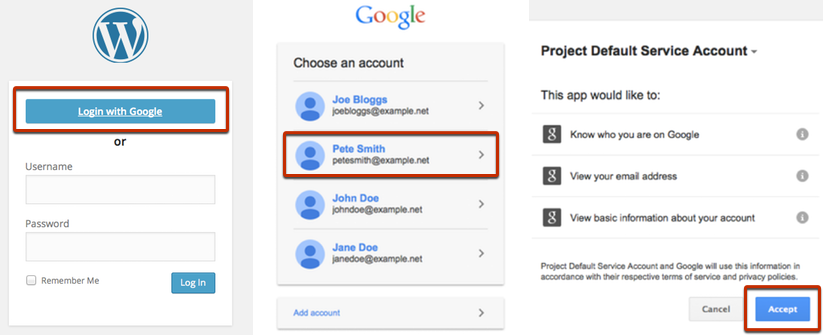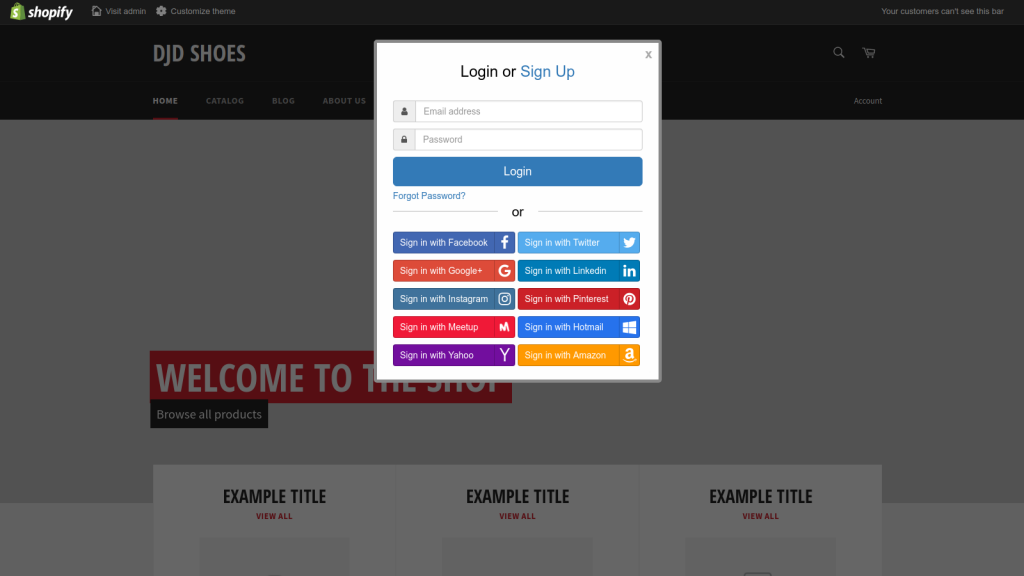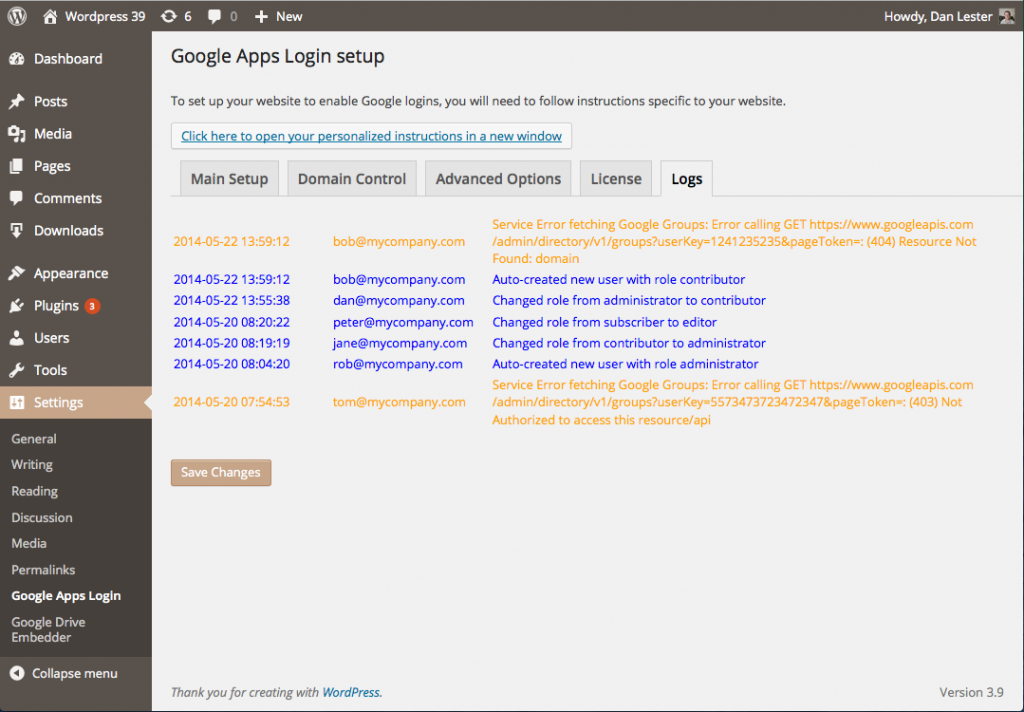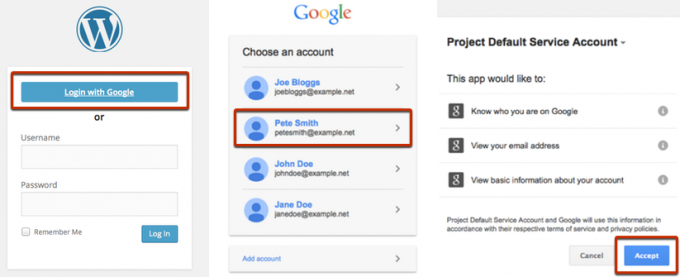Why should you add a Google Login button (also known as SSO or Single sign-on) to your WordPress site? It’s simple.
- It’s more efficient. Instead of trying to remember yet another password, Google’s one-click login allows access without having to reset accounts. (It takes far less admin work as well.)
- It’s more secure. Particularly, if you opt for Google’s multi-factor authentication (MFA) solution, even if a hacker does get through the first wall — he or she will also have to track down a second piece of data, such as the user’s fingerprint or voice, to break in.
- It improves the onboarding of new users. In the past, it took a while for a new WordPress account to be set up, leading to a greater potential for churn. With Google login, user profiles are automatically populated, leading to immediate engagement.
Read on to learn how to improve your site with Google login.
How Do You Add a Google Login Button?
All versions of our Google Apps Login plugin will add a new ‘Login with Google’ button to the login page of your WordPress site. However, you might also want to add a ‘Login with Google’ button to other pages on your site – for example, in a sidebar widget that will appear on every page.
The easiest way to add a ‘Login with Google’ button anywhere on the site is to create a link to "/wp-login.php?gaautologin=true".
For example:
<a href="/wp-login.php?gaautologin=true">Login with Google!</a>
You should be able to add this to your sidebar using the standard Text/HTML Widget in WordPress, and, of course, you should also be able to style the link into a button via your Theme’s styles.
Please contact us if you have any questions about how to implement this!
The Benefits of a Google Login Button
As we noted above, a Google Login button is more efficient, secure, and a leads to a better overall user experience.
On the front end of your WordPress site, a Google login will appear above the traditional WordPress login:

From there, select your Google account. If it’s your first time, WordPress might prompt you to view your Google information such as email address and basic info. Otherwise, it’s a single click to access.
Users will be familiar with the Google login option. Social login is common on many other sites like Shopify.

Because of this popular UX, it won’t be a difficult switch from the traditional WordPress login to a Google login. Your users will likely understand and appreciate the update. Easy access will reduce their chances of becoming frustrated and increase their engagement and satisfaction down the line.
Engagement is the name of the game, of course, but so are the metrics that track it. With more users logged in through the easy of the Google Login button, you have more access to customer engagement metrics. How often users are logging in, how often they visit, what parts of the site they engage with, what products they buy from your site (or sites linked to your site).
Also, having two sets of users — those who are logged in and those who are merely visiting — allows you to use WordPress plugins like WP Super Cache. These caching plugins serve visitors a static, HTML version of the page, while logged-in users will get PHP pages. This dynamic loading actually speeds up your site, ensuring visitors are still getting everything they need without draining your resources. And since almost everyone has a Google login, an easy Google Login button means more users logging in.
A Google Login button also makes life easier for admins. On the back end, an admin will be able to accept new users and categorize them into specific groups with varying permissions to access certain pages.

It’s a quick way to be sure your admin knows who is accessing which pages and at what times. It’s also clear what each user is allowed to do — edit a page, simply view a page, contribute content, or manage other users.
For more screenshots and a detailed tutorial about admin views, see our documentation.
Why a Google Login Button Is More Secure
With a Google Login button you have the option to add Google’s multi-factor authentication (MFA) solution. With data breaches on the rise, you can’t afford to rely on passwords alone. They’re notoriously easy to hack, especially since most people recycle passwords from site to site and use easy-to-guess ones that include their names, birthdates, or addresses.
Multi-factor authentication adds another layer of protection. For example, to access a site, a user might have to input a code they receive on their mobile phone in addition to their password. Biometrics are on the rise as well, especially now that most smart phones come standard with fingerprint and face recognition capabilities. So, you might be asked to provide a fingerprint in addition to a password. Again, multi-factor authentication is about combining something you know (a password) with something you have (a code on a mobile phone, your fingerprint, a badge, etc).

Image Source: Google]
If a hacker guesses the password, he or she will also have to track down this physical device to get through the second barrier. And if biometric measures are used, assuming the biometric recognition and encryption are up to snuff, the hacker is going to have an even more difficult time trying to get your thumbprint or retinal scan.
Time to Make the Switch
There’s no better time to add a ‘Login with Google’ button to your WordPress site. Adding a Google login button on your homepage or the sidebar of another page will elevate your entire site to a more professional level.
Learn more about our Google login for WordPress here.

